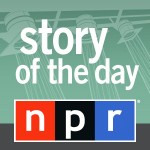The Story of NPR
By Phin Upham
Before NPR existed, there was the National Educational Radio Network. It ran primarily on funding from the Ford Foundation, and its goal was to broadcast education programming. National Public Radio officially took over for NERN with the passage of the Public Broadcasting Act of 1967. Its first president was Donald Quayle, and it began with only 30 employees on staff to create its programming.
Today’s NPR receives a combination of both public and private donors, with individuals and companies making up the bulk of the contributions. NPR itself is the national branch, and local stations pay NPR for its programming. There are currently 900 radio stations that syndicate the content published by NPR, and its news programs are well known in America.
NPR is concerned primarily with news of the day, but it known for its cultural programming as well. NPR content is not required to be part of the broadcast regiment of its local stations, and most will develop their own shows in order to augment the programming they receive from NPR. KCRW as an example, based out of Santa Monica, has a morning radio show on weekdays called “Morning Becomes Eclectic” that aims to be a venue for new music programming from popular indie artists.
The two flagship programs that NPR’s content is based off of are the morning show “Morning Edition” and “All Things Considered” in the afternoon and evenings. NPR distributes its programs using the Public Radio Satellite System, which it is in charge of managing. That puts American Public Media and Public Radio International under the jurisdiction of NPR.
About the Author: Phin Upham is an investor at a family office/ hedgefund, where he focuses on special situation illiquid investing. Before this position, Phin Upham was working at Morgan Stanley in the Media & Technology group. You may contact Phin on his Phin Upham website or Twitter page.


Leave a Reply
You must be logged in to post a comment.